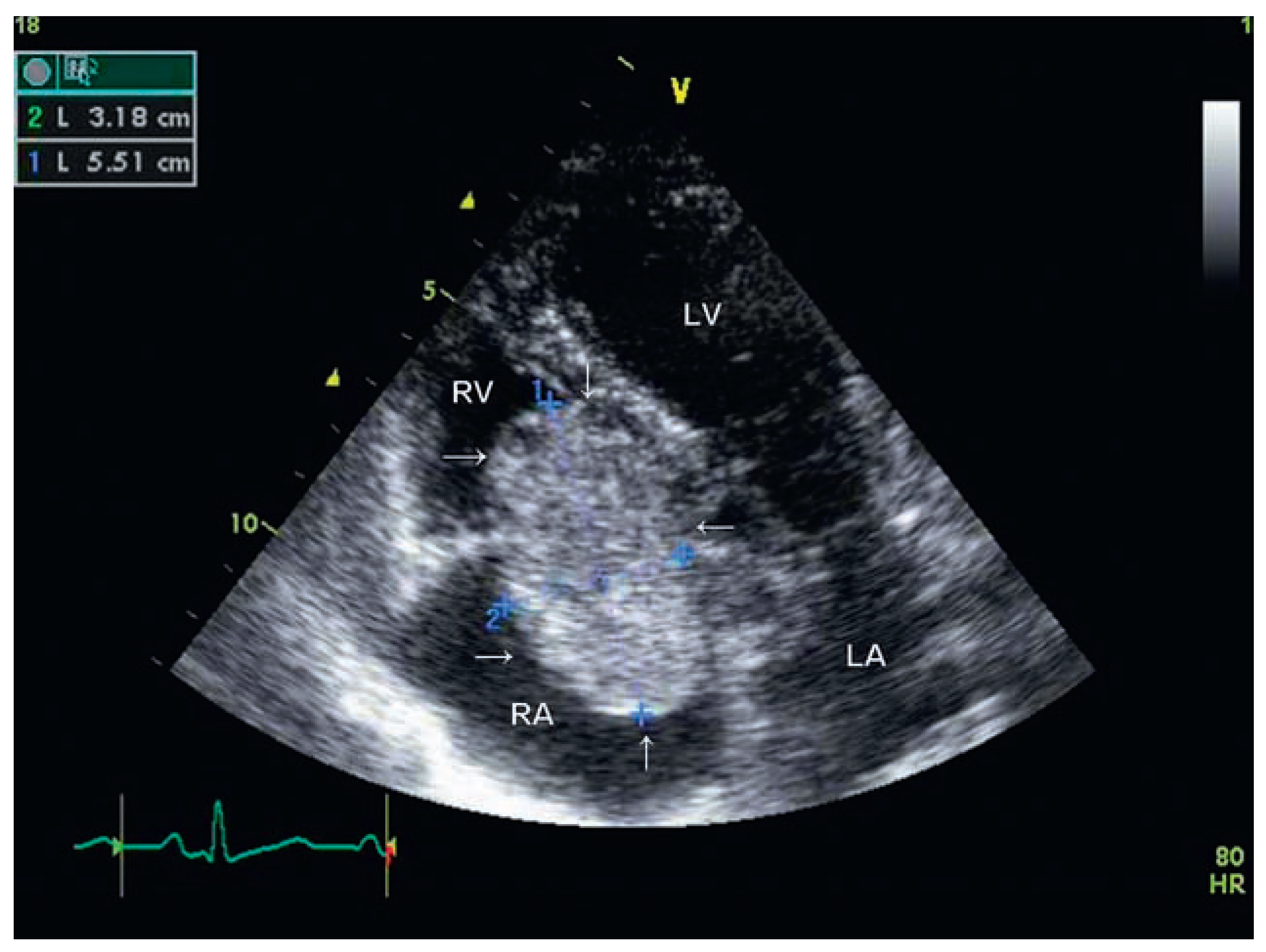Angiographic Visualisation of a Right Atrial Myxoma †
Case report
| 1 | ETT apical view showing a pedonculated mass prolapsing into the tricuspid orifice during diastole. |
| 2 | Left coronary artery injection (lateral view) showing in a beautiful manner the movement of the mass and its neovascularisation arising from a left auricular branch of the LCx. |
| 3 | Right coronary artery injection (antero-posterior cranial view) showing the large mobile mass being supplied by an AV nodal artery arising from the right coronary artery. |
References
- Sabatine, M.; Colucci, W.; Schoen, F. Primary tumors of the heart. In Braunwald’s Heart Disease, 7th ed.; Libby, P., Bonow, R.O., Mann, D.L., Zipes, D.P., Eds.; Elsevier Saunders: Philadelphia, 2005; p. 1746. [Google Scholar]



© 2008 by the authors. Licensee MDPI, Basel, Switzerland. This article is an open access article distributed under the terms and conditions of the Creative Commons Attribution (CC BY) license (https://creativecommons.org/licenses/by/4.0/).
Share and Cite
Noble, S.; Frangos, C.; Tanguay, J.-F. Angiographic Visualisation of a Right Atrial Myxoma. Cardiovasc. Med. 2008, 11, 256. https://doi.org/10.4414/cvm.2008.01340
Noble S, Frangos C, Tanguay J-F. Angiographic Visualisation of a Right Atrial Myxoma. Cardiovascular Medicine. 2008; 11(7):256. https://doi.org/10.4414/cvm.2008.01340
Chicago/Turabian StyleNoble, Stéphane, Caroline Frangos, and Jean-François Tanguay. 2008. "Angiographic Visualisation of a Right Atrial Myxoma" Cardiovascular Medicine 11, no. 7: 256. https://doi.org/10.4414/cvm.2008.01340
APA StyleNoble, S., Frangos, C., & Tanguay, J.-F. (2008). Angiographic Visualisation of a Right Atrial Myxoma. Cardiovascular Medicine, 11(7), 256. https://doi.org/10.4414/cvm.2008.01340



